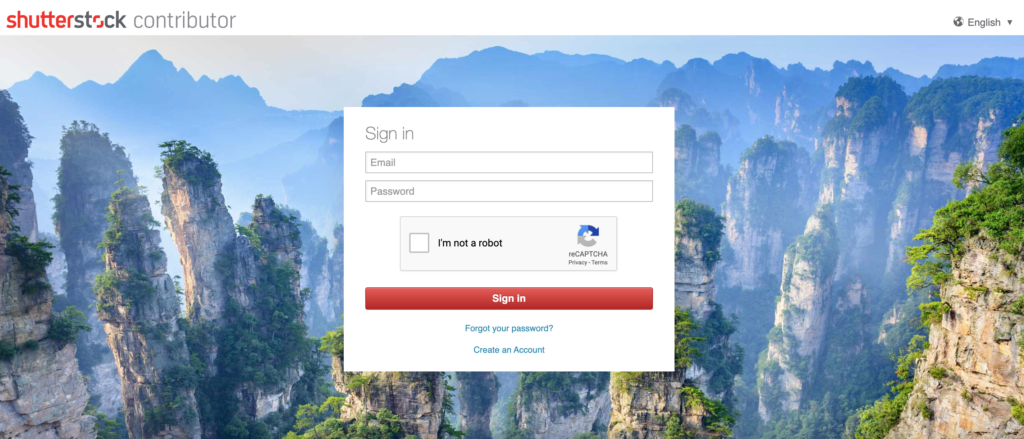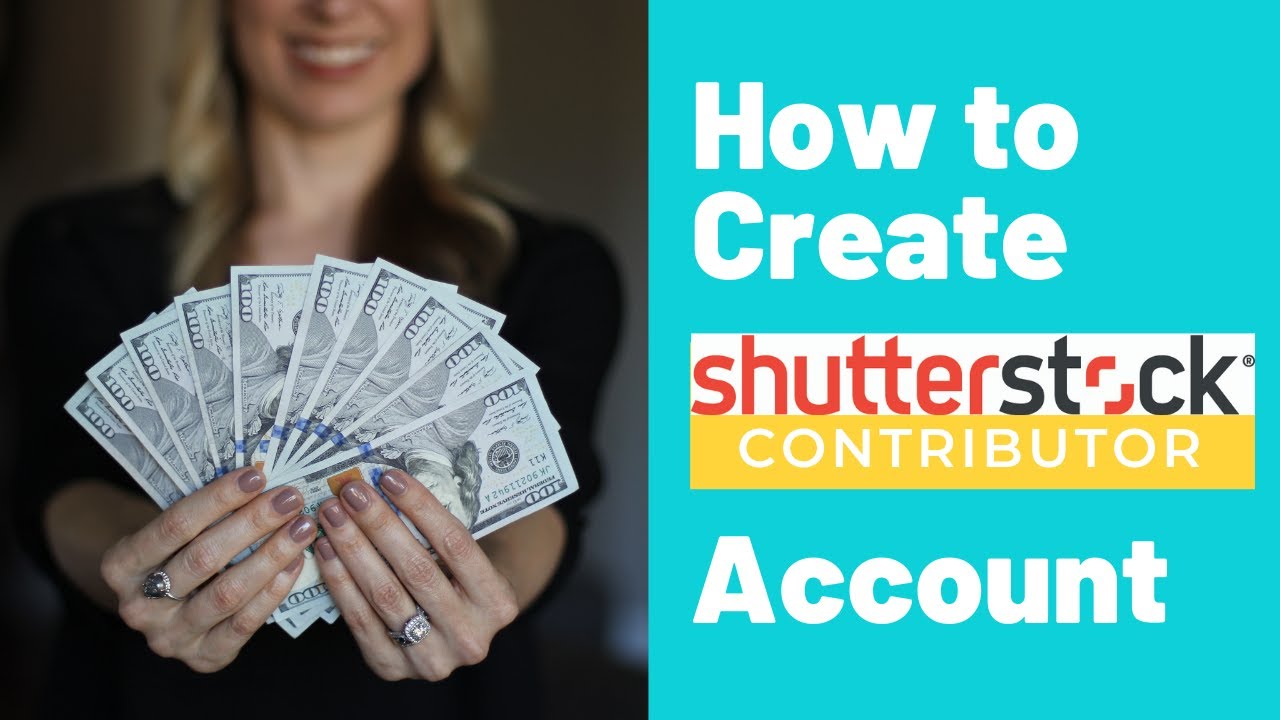Applying to become a Shutterstock contributor can be exciting, but facing repeated rejections can be frustrating. Understanding the nuances of the application process is vital for your success. This article will help you grasp the key account requirements as well as the common pitfalls that lead to rejections.
Understanding Shutterstock Contributor Account Requirements
 To become a Shutterstock contributor, your application must meet specific criteria. These requirements include:
To become a Shutterstock contributor, your application must meet specific criteria. These requirements include:
- Quality of Work: Your submitted images must meet quality standards including sharpness, exposure, and composition.
- Content Type: Shutterstock has guidelines on acceptable content types—ensure your work fits their accepted categories.
- Licensing Knowledge: Contributors must demonstrate a clear understanding of licensing issues, including model and property releases.
- Originality: Submit original work that adheres to copyright laws and avoids plagiarism.
- Technical Specifications: Images must adhere to specified technical requirements such as minimum resolution and file format.
Common Reasons for Account Rejection
Several factors can lead to the rejection of your Shutterstock contributor account. Familiarizing yourself with these reasons can help you address potential issues:
- Poor Image Quality: Submissions with low resolution, poor lighting, or distracting elements are often rejected.
- Failure to Follow Guidelines: Not adhering closely to Shutterstock’s submission guidelines can result in an automatic rejection.
- Lack of Variety: Spamming the platform with similar images might indicate a lack of creativity and variability.
- Incomplete Applications: Failing to provide all required information, including personal and tax details, can hinder your application.
- Not Using Model Releases: Submissions featuring recognizable people or private property must include appropriate releases or they will be rejected.
How to Prepare Your Portfolio for Submission
 Preparing your portfolio for submission to Shutterstock can feel overwhelming, but it doesn’t have to be! Here are some key steps to ensure your portfolio stands out and meets all the necessary requirements:
Preparing your portfolio for submission to Shutterstock can feel overwhelming, but it doesn’t have to be! Here are some key steps to ensure your portfolio stands out and meets all the necessary requirements:
- Choose Your Best Work: Quality over quantity is crucial. Select a diverse range of your best images, vectors, or videos that showcase your unique talent and style.
- Follow the Guidelines: Familiarize yourself with Shutterstock’s specific submission guidelines. This includes understanding the required file formats, size limitations, and content restrictions.
- Organize Effectively: Arrange your portfolio logically. Group similar types of work together, making it easy for reviewers to navigate through your submissions.
- Add Variations: If relevant, submit variations of popular themes. For example, different angles of the same subject can demonstrate versatility.
- Provide Metadata: Spend time crafting detailed titles, descriptions, and keywords for each piece. This metadata helps the review team understand your work and increases your content’s visibility on the platform.
Remember, the goal is to present a polished collection that reflects your creative skills. Take your time and ensure every asset truly represents your best work. A well-prepared portfolio is your ticket to becoming a successful contributor!
Tips for Meeting Shutterstock’s Quality Standards
When submitting your work to Shutterstock, understanding their quality standards is essential. Here are some valuable tips to help you meet and even exceed these expectations:
- Focus on Image Clarity: Ensure all your images are in sharp focus, with no blurry areas. High-resolution files are a must, as low-quality images are often rejected outright.
- Avoid Noise: Digital noise can detract from the quality of your images. Use editing software to reduce noise and enhance clarity, especially in low-light shots.
- Mind Your Composition: Good composition can make or break a visual. Use the rule of thirds, leading lines, and balanced elements to create captivating images that attract viewers.
- Color and Lighting: Pay attention to your color palette and lighting. Well-lit, color-balanced images are vastly preferred, so consider shooting during golden hour or investing in lighting equipment.
- Regularly Update Your Portfolio: Trends change, and so do quality standards. Regularly review and update your portfolio with fresh, high-quality content to stay competitive.
By implementing these tips, you ensure your submissions align with Shutterstock’s quality standards, making it much more likely that your work will be accepted. Good luck, and happy shooting!
Best Practices for Uploading Your Content
Submitting your content to Shutterstock can feel daunting, especially if you’ve faced rejections in the past. However, by following some best practices for uploading, you can significantly increase your chances of acceptance. Here are a few key tips to keep in mind:
- Choose Quality Over Quantity: It’s tempting to upload as many images or videos as possible, but quality is paramount. Aim to upload only your best work.
- Understand the Content Requirements: Familiarize yourself with what Shutterstock accepts. For example, avoid copyright infringement by ensuring you only use images and music you’ve created or have rights to.
- Use High-Resolution Files: Submitting high-resolution content is essential. Aim for at least 4K for videos and high DPI (minimum 300) for images.
- Optimize Metadata: Properly tagging your work can help it get discovered. Use relevant keywords in your titles and descriptions to make your content searchable.
- Edit and Enhance: Use editing software to enhance your images or videos. Proper exposure, color correction, and sharpness can make a significant difference.
Lastly, keep an eye on trends within the stock photography and videography markets. By uploading content that aligns with current demands, you not only increase your chances of acceptance but also boost your sales potential!
Navigating the Review Process Effectively
The review process can often feel like a mystery, especially when you’re eager to see your work published. However, understanding how to navigate it effectively can make a huge difference. Here’s what to focus on:
- Be Patient: Reviews can take time. While you might want immediate feedback, remember that quality checks require careful consideration.
- Follow Up: If your content has been under review for an unusually long time, consider reaching out to Shutterstock support for an update. Rinse and repeat if necessary, but keep it polite.
- Learn from Feedback: If your submission is rejected, don’t be discouraged. Review any feedback provided and use it as a learning opportunity to improve future uploads.
- Participate in the Community: Engaging with other contributors can provide invaluable insights. Join forums, social media groups, or other platforms where contributors share their experiences and tips.
- Keep Track of Trends: Noticing patterns in your accepted or rejected submissions can guide your future work. If certain themes or styles are consistently favored, lean into those.
By approaching the review process with knowledge and a positive mindset, you can enhance your contributor experience and ultimately boost your success on the platform!
How to Appeal a Rejected Contributor Application
It’s never easy to receive a rejection notice, especially when you’ve put in the hard work to create your portfolio. However, if your contributor application to Shutterstock has been rejected, don’t lose hope! There’s a process to appeal the decision, and here’s how you can go about it:
- Review the Rejection Reason: Start by carefully reading the message from Shutterstock. They typically provide feedback on why your application was declined. Understanding their reasons is crucial for making a strong appeal.
- Enhance Your Portfolio: Take the feedback seriously. If Shutterstock noted that your images lacked diversity or quality, consider revisiting your portfolio. Adding more relevant, high-quality images can significantly strengthen your appeal.
- Prepare a Strong Appeal Message: When contacting Shutterstock’s support, keep your tone professional. Clearly state your intention to appeal, address the specific reasons for the rejection, and explain how you’ve made changes or improvements based on their feedback.
- Be Patient: After submitting your appeal, give them some time to respond. Shutterstock receives many inquiries, and it may take a while to review your appeal thoroughly.
- Learn from the Experience: Whether or not your appeal is successful, use this as a learning opportunity. Continuous improvement is key in stock photography, so always strive to make your portfolio better.
Remember, rejection is just a part of the creative journey. With determination and persistence, you can increase your chances for success!
Success Stories from Shutterstock Contributors
If you’re feeling discouraged about your Shutterstock contributor application, let the success stories of others inspire you! Many photographers and artists have faced rejection at first but have gone on to achieve incredible success. Here are a few highlights:
| Contributor | Initial Challenges | Path to Success |
|---|---|---|
| Sarah M. | Rejected twice for image quality | Refined her editing skills, invested in better equipment, and now has over 1,000 downloads! |
| John D. | Portfolio lacked diversity | Expanded to include vector graphics and lifestyle photography, currently earns passive income monthly. |
| Alice K. | Rejected for not following guidelines | Took time to learn the Shutterstock guidelines deeply, gained approval, and now creates trending content. |
These stories show that perseverance pays off! Many contributors started from scratch—some even faced multiple rejections. By improving their skills, broadening their portfolios, and taking feedback to heart, they found success on the platform. If they can do it, so can you!
Resources for Aspiring Shutterstock Contributors
Submitting images and videos to Shutterstock can be an exciting pursuit for aspiring contributors, but frequent rejections can be disheartening. Understanding the reasons behind these rejections is crucial for improving your submissions and increasing your chances of success. Here are some common causes for rejection and helpful resources to assist you on your journey to becoming a successful Shutterstock contributor:
- Technical Quality: Images must meet specific technical criteria. Check for
- Appropriate resolution (minimum 4MP for photos).
- Proper exposure and focus.
- Free of noise and artifacts.
- Content Guidelines: Ensure your submissions comply with Shutterstock’s content guidelines, which include:
- No identifiable trademarks or logos.
- Model releases for recognizable people.
- Property releases for private property.
- Redundancy: Avoid submitting images that closely resemble those already available on Shutterstock. Analyzing existing content can prevent redundancy.
- Keywording and Titles: Use relevant keywords and ensure titles accurately reflect your content. This helps in enhancing discoverability.
Helpful Resources:
| Resource | Description |
|---|---|
| Shutterstock Contributor Blog | Stay updated with the latest tips and best practices for contributors. |
| Shutterstock Contributor Dashboard | Manage your portfolio, track sales, and review submission guidelines. |
| Shutterstock YouTube Channel | Watch tutorials and success stories from other contributors. |
By understanding the common pitfalls and utilizing available resources, aspiring Shutterstock contributors can significantly improve their submissions and increase their chances of acceptance into the platform.



